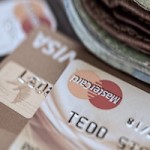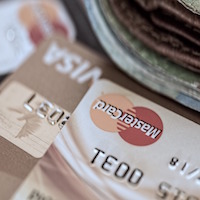How can Cash Management influence the Cash Conversion Cycle?
| 27-06-2016 | Olivier Werlingshoff |

How can the Cash Conversion Cycle (CCC) be optimized? The CCC measures the time the money is tied up in the sales and the production process before it’s converted into a cash in from customers. When translated in a formula this will be the DSO + DIO – DPO (Day’s Sales Outstanding + Day’s Inventory Outstanding – Day’s Payables Outstanding).
In this article I will focus on the DSO. Strictly, the DSO is the time it takes for invoices to be paid. I prefer to enlarge this, to the moment you received the order from the customer till the moment the money is on your main bank account.
How can the “enlarged” DSO be shortened with cash management products?
Let’s look at the customer first, how would he prefer to pay?
Card payments:
In the retail sector 50% of the transactions are made by card (credit & debit cards). The other 50% of the transactions are still done by cash. Card transactions are a fast and easy way to receive the money on your bank account. With contactless cards you can even minimize the transaction time, if there is a bottle neck, you can increase your sales by accepting those cards!
The process with cash transactions is more extensive and expensive. You have to save and collect the cash before dropping it at your bank. After a few days the money will appear on your bank account.
Be aware that there are reasons why customers still prefer to make cash payments. Last year I set up a test of 6 weeks of not accepting cash in one retail shop. The total sales dropped with 15%!
Mail with payment link:
When you have the mail addresses from you customers you could consider to send the invoice the same day by mail with a link to the Ideal website. This will encourage your client to choose the payment method you prefer. Furthermore you will save postal costs and paper costs by not sending paper invoices.
Foreign countries:
If you have customers in foreign countries, be aware of the local habits. For example in the US, most of the payments are done by cheques. In the UK and in France cheques are still used as payment instrument. The problem with cheques is that when receiving them, they have to be send back to the original bank before the money will be transferred to your account.
To fasten this process you could consider the possibilities of a local cheque lockbox. With a lockbox your client can send his cheque directly to a local address at a bank and the transactions can be processed immediately. The time that will be saved is the “post time” and the “process time” of the cheque.
International transfer:
If you prefer your customer to make an international transfer, it can be an option to open a local bank account. Depending on the number and the amount of transactions this could save you a lot of transfer costs. To get the money from your local bank account on your main account in The Netherlands there are a lot of cash pool instruments you can use. Jan Meulendijks has written an article last week about how to include foreign bank accounts into your cash pool.
SEPA:
In de SEPA region there are no differences in transfer costs between a national transfer and a transfer between SEPA countries. It is seen as one SEPA region without borders. You can mention your main IBAN number on your invoices and ask your customers to transfer the money direct to your main account.
But even with SEPA it could be an idea to hold a local bank account. In some countries customers still prefer to make transfers to a “national” bank account instead of an IBAN in another country. Some local governments even still oblige you to hold a local bank account for tax payment purposes!
As you can read,besides a good credit management system, there are a lot of cash management instruments that can be used to fasten the payments of your customers.

Owner of WERFIAD











